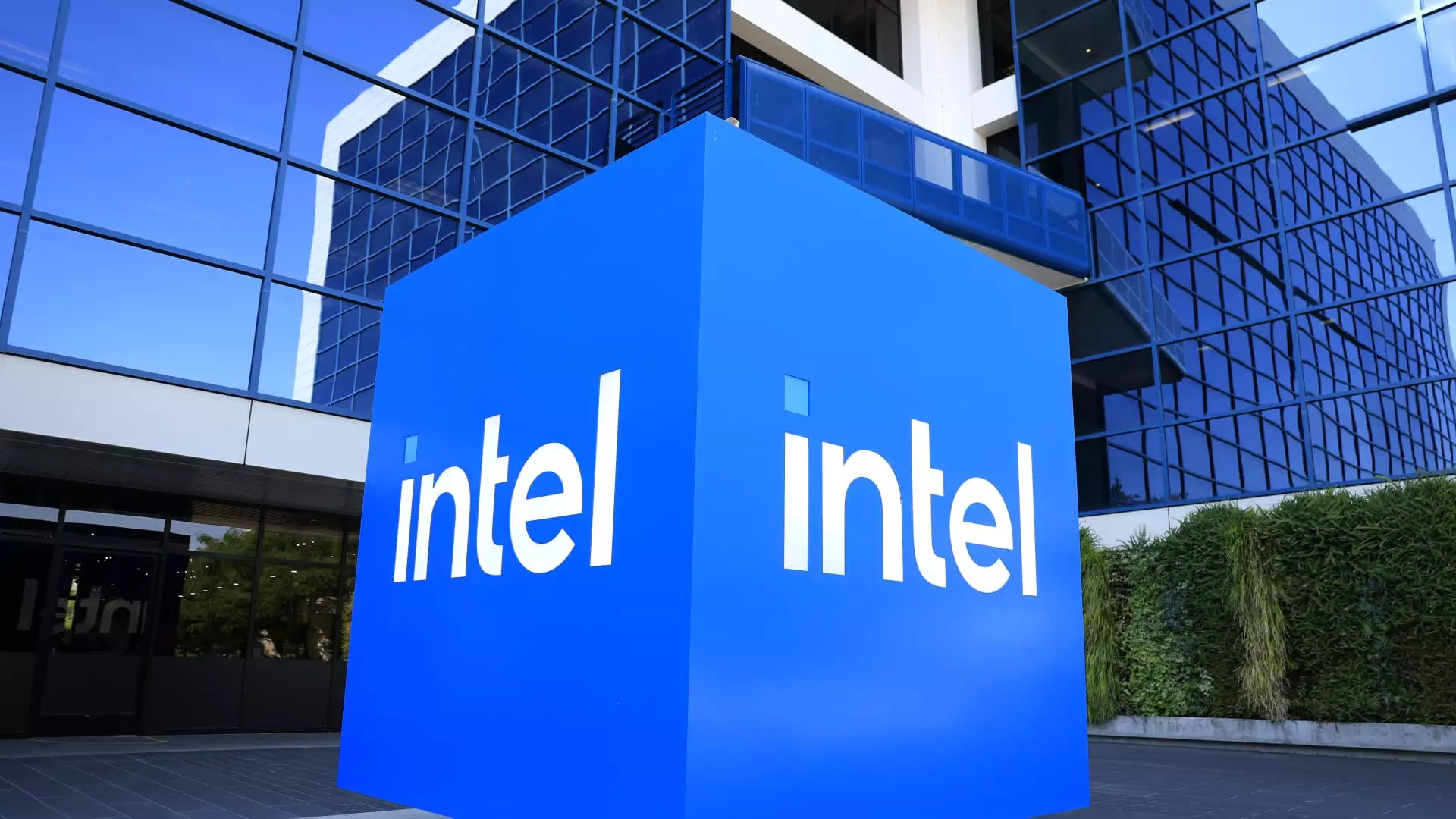In recent quarters, Intel has oscillated between desperation and cautious optimism, a pattern that reflects the turbulent landscape of global chip manufacturing. The latest earnings report offers a glimmer of encouragement—revenue surpassing Wall Street expectations, a slight uptick in stock price, and a strategic pivot by new CEO Lip-Bu Tan. However, beneath these surface-level wins lies a complex web of austerity, strategic retraction, and internal turmoil that raises pressing questions about Intel’s long-term viability. Is this a genuine renaissance, or merely a façade concealing deeper structural issues that have yet to be resolved?
The impressive second-quarter revenue of $12.86 billion, beating analyst estimates, suggests that Intel can still generate sales—an achievement rendered more important as the technological core of the modern economy remains fiercely competitive. Yet, this victory masks the looming cloud of losses; a net loss of nearly $3 billion casts doubt on the profitability of current strategies. It’s a stark reminder that revenue gains alone are insufficient if costs spiral out of control and if core margins continue to erode. The $800 million impairment charge due to unusable tools signals miscalculations in investment and planning, exposing underlying misalignments between ambitions and execution.
Leadership’s Mandate for Restructuring—A Double-Edged Sword
CEO Lip-Bu Tan’s leadership signals a pragmatic yet potentially perilous course. His announcement of substantial layoffs—15% of the workforce, primarily targeted at the engineering-heavy bases in Oregon and California—demonstrates a ruthless drive to cut costs. While reducing operational fat can bolster short-term financials, the human cost, company morale, and potential loss of innovation capacity cannot be overlooked. Such layoffs, if overly aggressive, risk creating a stagnating environment where creativity and agility suffer, especially in an industry that thrives on relentless innovation.
Tan’s vow to tame bureaucracy and tighten spending reflects a sober assessment of the company’s overreach in recent years. Investing too aggressively in manufacturing capacity without securing enough demand has saddled Intel with underutilized assets and costly excess capacity. Canceling fab projects in Germany and Poland, and consolidating operations in Southeast Asia, underscores a tectonic shift from expansion to strategic scarcity. This process, though rational from a financial perspective, could hamper Intel’s ability to scale swiftly when market conditions improve. The question remains whether this retrenchment is a temporary correction or a permanent retreat from global manufacturing ambitions.
The Margins of Ambition and the Reality of Competition
Intel’s foundry division, once heralded as a potential growth avenue, continues to languish in the red. An $3.17 billion operating loss on $4.4 billion in revenue paints a bleak picture of a business still seeking its footing. Investing heavily in manufacturing capacity while struggling to attract large, committed customers reveals a fundamental misjudgment about market demand and competitive positioning. Rivals like AMD have made significant inroads into high-margin server markets, leveraging innovative architectures and strategic partnerships, while Intel appears mired in internal restructuring.
Furthermore, the company’s strategy to base new chip manufacturing processes on definitive customer commitments—embodying a “no blank checks” approach—suggests a more disciplined, albeit less aggressive, stance. This shift could be a prudent move to safeguard profitability, but it also risks slowing down the technological race if demand recovers more quickly than anticipated. The internal review of chip designs before tape-out, an unprecedented step, signals a desire for tighter quality control, yet it also introduces potential delays and bottlenecks.
Market Perception and Future Outlook
Intel’s stock performance over the past year, with a dramatic collapse of 60%, underscores the erosion of investor confidence. While the recent 13% uptick offers temporary relief, it may not be enough to reverse the long-standing doubts about Intel’s capacity to compete at the highest levels. The liberal center recognizes that speculation and short-term valuation swings cannot substitute for fundamental innovation and strategic clarity.
The company’s emphasis on regaining market share in data center chips indicates an acute awareness of the challenges posed by competitors like AMD and Nvidia. However, with no clear long-term leadership announced for these divisions, Intel risks losing momentum in critical growth segments. The internal review to approve all chip designs prior to fabrication, while potentially improving quality, may inadvertently impair the agility required to outpace rivals in a rapidly evolving technological landscape.
For Intel, the road ahead remains fraught with strategic pitfalls. The promise of revitalization hinges on balancing cutting costs with fueling innovation—a delicate dance that demands more than slogans and layoffs. Unless the company can sustain its newfound discipline without stifling its innovative spirit, its return to relevance may remain an elusive goal. The looming question persists: will Intel adapt quickly enough, or will it become another example of a tech giant too slow to evolve?


Leave a Reply